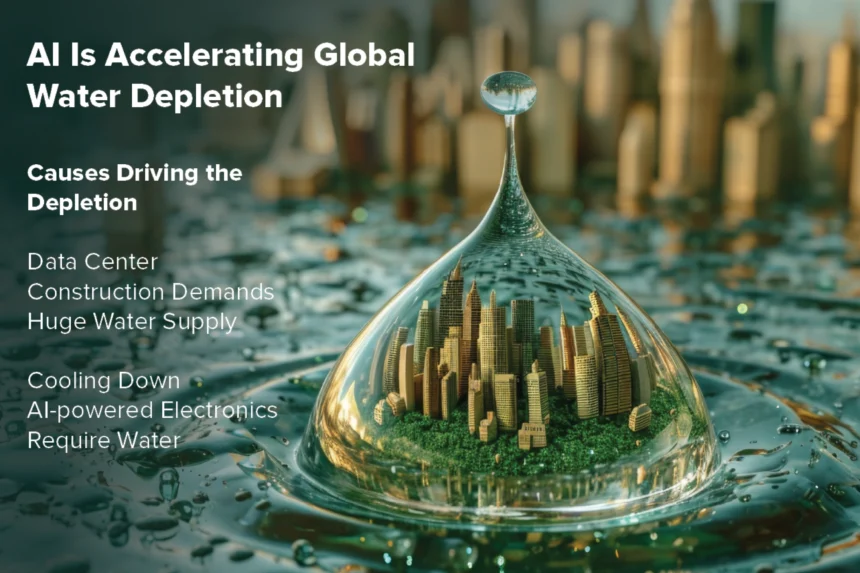Water encompasses 70% of the Earth’s surface, and it is the most essential element for the survival of all living things. However, the most shocking fact is that only 3% of the world’s water is freshwater, the water we use for drinking and irrigation purposes. Of that 3%, over two-thirds is frozen glaciers and unavailable for consumption. “Water is life,” and we must do everything in our power to save the thing that gives us life.
With The CEO Views, you can now get access to content that sheds light on the world’s most pressing issues, including water scarcity, along with a wide range of business topics. Our business magazine goes beyond the business aspects and also brings to light hurdles and opportunities that are either driven by the global business world or are affecting the business landscape worldwide.
According to the World Health Organization and UNICEF, despite gains since 2015, 2.1 billion people globally still lack access to safely managed drinking water, including 106 million who directly drink from untreated surface sources. This implies the world is already facing water scarcity, and the advent of artificial intelligence has accelerated the water depletion process to a large extent. Let’s find out how AI is escalating water scarcity globally with this article.
Water Scarcity: Facts and Figures We Should Be Aware Of
The United Nations Environmental Report states that nearly two-thirds of the world’s population experiences severe water shortages for at least a month in a year. By 2030, this gap could worsen, with almost half of the population facing water stress. The United Nations states that water is at the core of sustainable development and is crucial for socio-economic development, energy and food production, human survival, and healthy ecosystems. Globally, industry accounts for approximately 20% of all freshwater withdrawals, and this figure could be higher in specific industrialized nations.
How Artificial Intelligence is Causing Water Depletion?
AI accelerating water scarcity worldwide is gradually raising concern among regions that face the issue the most. Each time an AI chatbot is asked to summarize a lengthy document or conjure up a cartoon squirrel wearing glasses, it sends the request to a data center and drains the most scarce resource, water. Data centers that power AI consume an enormous amount of water to cool heated servers and, indirectly, from the electricity required to run these centers.
According to a Bloomberg report, since 2022, approximately two-thirds of new data centers built or in development are in locations already under extensive water stress. With the rapid increase in the development of these facilities, five states alone account for 72% of the new centers in high-stress regions.
UN Environment Programme says that people have high hopes about AI’s potential to help address some of the world’s biggest environmental emergencies. This groundbreaking technology is already mapping the destructive sand dredging and charting methane emissions to reduce their impact on the environment. However, AI is not all good when it comes to protecting environmental resources. This technology has a ripple effect on crucial natural resources, like water.
The Environment Programme highlights that the proliferating data centers, home to AI servers and generators of electronic waste, extensively consume water. Most large-scale AI deployments take place in data centers, including the ones operated by cloud service providers. The construction of these facilities requires water. Once operational, they require water to cool down electrical components. Soon, AI-related infrastructure globally is predicted to consume six times more water than Denmark does.
Tech giants have increased their water needs to cool data centers due to the increasing demand for generative AI and other AI-powered online services. As data centers use cooling towers and air mechanisms to disperse heat, they cause up to 9 litres of water to evaporate per kWh of used energy.
Technology companies like Microsoft, Meta, and Google are committed to reducing their environmental impact to replenish more water than they consume by 2030. Recently, Google has announced its investment of $40 billion in the AI-data center project in Texas is raising concerns about the impact this project could bring on this water-stressed region. Looking at the scenario, it is hard to believe how these tech giants could deal with the rising issue of water depletion caused by the tech industries.
AI’s Impact Goes Beyond Water Depletion
AI’s environmental impact moves beyond water depletion. AI is having a degrading impact on the environment in several other ways. The electronics they use rely on a staggering amount of materials. For instance, a 2kg AI-powered computer needs 800kg of raw materials, which can be environmentally destructive. Also, these data centers generate enormous electronic waste, which contains hazardous substances. Powering the complex electronics of these data centers requires a vast amount of energy to host the AI technology. This energy comes from the burning of fossil fuels, which produces greenhouse gases, causing global warming.
The United States relies on water-intensive thermoelectric plants for electricity, increasing data centers’ water footprint. However, water depletion due to technology industries is a significant environmental impact that is hard to mitigate.









